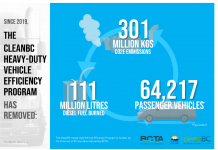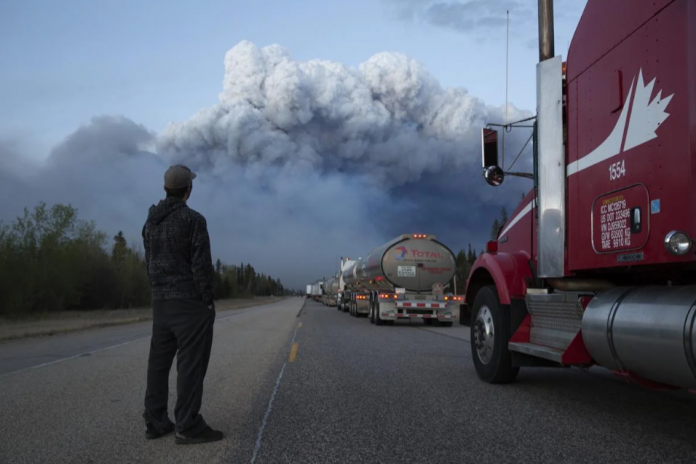Wildfire flames reach 50 meters in height with a ground temperature exceeding 1200*C. To put it into perspective…a house fire has a ground temperature of 815*C. A wildfire is an unplanned fire that burns in a natural area such as a forest, grassland, prairie or drought regions. Wildfires are often caused by human activity or a natural event such as lightning. In 50% of wildfires recorded, it is not known how they started.
Wildfires make traveling in hard-hit areas difficult, shutting down roads and routes such as railways and main roads. Everything on these roads from employee travel to transporting and delivering goods must be put on hold while crews work to clear those areas from debris. But patience is not on the minds of most.
A wildfire can last months. They can start with no warning. Risk is widespread. Loss of lives and goods is inevitable. However, it is still difficult to take pre-emptive steps. You can plan for a hurricanes and tornado’s if you are in those likely areas. However, wildfires can happen anywhere. Beyond the obvious precautions evacuation if often the only option.
Wildfires 101
Wildfires often start small and initially go unnoticed but have the capacity to spread very quickly. As they travel across large areas, they ignite brush, trees, homes, and buildings. Burning debris can be thrown up to two kilometres ahead of a wildfire. Sparks and embers can ignite materials on or near your home causing severe damage. On average in Canada, wildfires burn 2.5 million ha/year, nearly half the size of Nova Scotia. Much of the country is at risk of wildfires. Most wildfires occur between April and September.
Wildfires often make traveling in hard-hit areas challenging, closing roads and other transportation routes such as railways. Businesses rely on these roads for employee travel or transporting goods and have to be patient while crews work to clear those areas from debris. Emergency and recovery vehicles may take over these routes for some time.
Direct Impact to…
People | Equipment |Assets | Property loss can lead to complete shut down. In some cases their clients, customers might find an alternative choice and not easily return.
There is a ripple effect when a natural disaster occurs. While EMS are working overtime battling flames and safely evacuate people from dangerous areas, many other sectors feel the effects of the fires. The transportation sector has had to re-route many of its regular lines and in some cases, has had to stop running in some parts of the province. Jobs stop. Workers stop. Economy stops.
The rail lines in the B.C. Interior that provide critical transport links for goods and material shipped in and out of the Port of Vancouver are operational but operating at reduced volume, according to a trans-loading company in Vancouver.
CN and CP rail lines have faced disruptions and shut temporarily or slowed down because of wildfire that destroyed the town of Lytton more than two weeks ago and more recently when a wildfire came close to rail lines.
Premier says ‘all hands-on deck’ for firefighting, no need for state of emergency. reports the Vancouver Sun “Right now, my best description of the rail services would be intermittent and reduced capacity,” said Jordan Atkins, vice-president at WTC Group Inc.
The company provides services to export and import customers that move products through the Vancouver port and has trans-loading facilities in Port Coquitlam, Delta and New Westminster. WTC handles materials such as grain, plastic, pulp and lumber for export and all kinds of merchandise on import. Jordan Atkins noted the impact on rail lines from the wildfires has caused transport congestion in Metro Vancouver, with ships facing delays to be unloaded and delays in getting cargo through the port for export. Atkins expects it will take a few weeks to clear up the backlogs.
“We’re going to have some pretty elastic band effects here where our terminals are extremely full right now, but there’s nothing in the pipeline on the export side. And our terminals are extremely empty on the import side, but we’re needing to get that cargo in from the vessel,” he explained.
A group representing lumber manufacturers in B.C. said producers had already seen inventories build up at their mill sites for a few weeks before CN announced its suspension.
“Rail is the lifeblood of our industry,” Council of Forest Industries CEO Susan Yurkovich said and “if this goes on for a long period of time, it could influence production at our facilities.” Continuing hot and dry conditions — which can fuel wildfires — are forecast for the coming weeks in the Interior.
Teck Resources, a major coal producer, said it is implementing measures to mitigate the effect of rail disruptions, including rerouting shipments to Ridley Terminals in Prince Rupert.
Western Canadian Wheat Growers executive director Dave Quist said the rail disruptions are not an issue now as it is not the normal time for major wheat shipments but could be an issue in terms of imports of equipment.
Be mindful when in the catchment area of a wildfire … emergency and recovery vehicles may shut the road down in order of r them to use it.
All these factors often lead to an increase in prices in transportation and cost of goods. There is not much one can do to strop a wildfire, but you can take a pre-emptive look at how to limit risk for all. The most effective way to minimize risk to your employees …. establish a communication method to keep them safe and informed.
Here are a couple of links that provide a current map view of the wildfires…






















